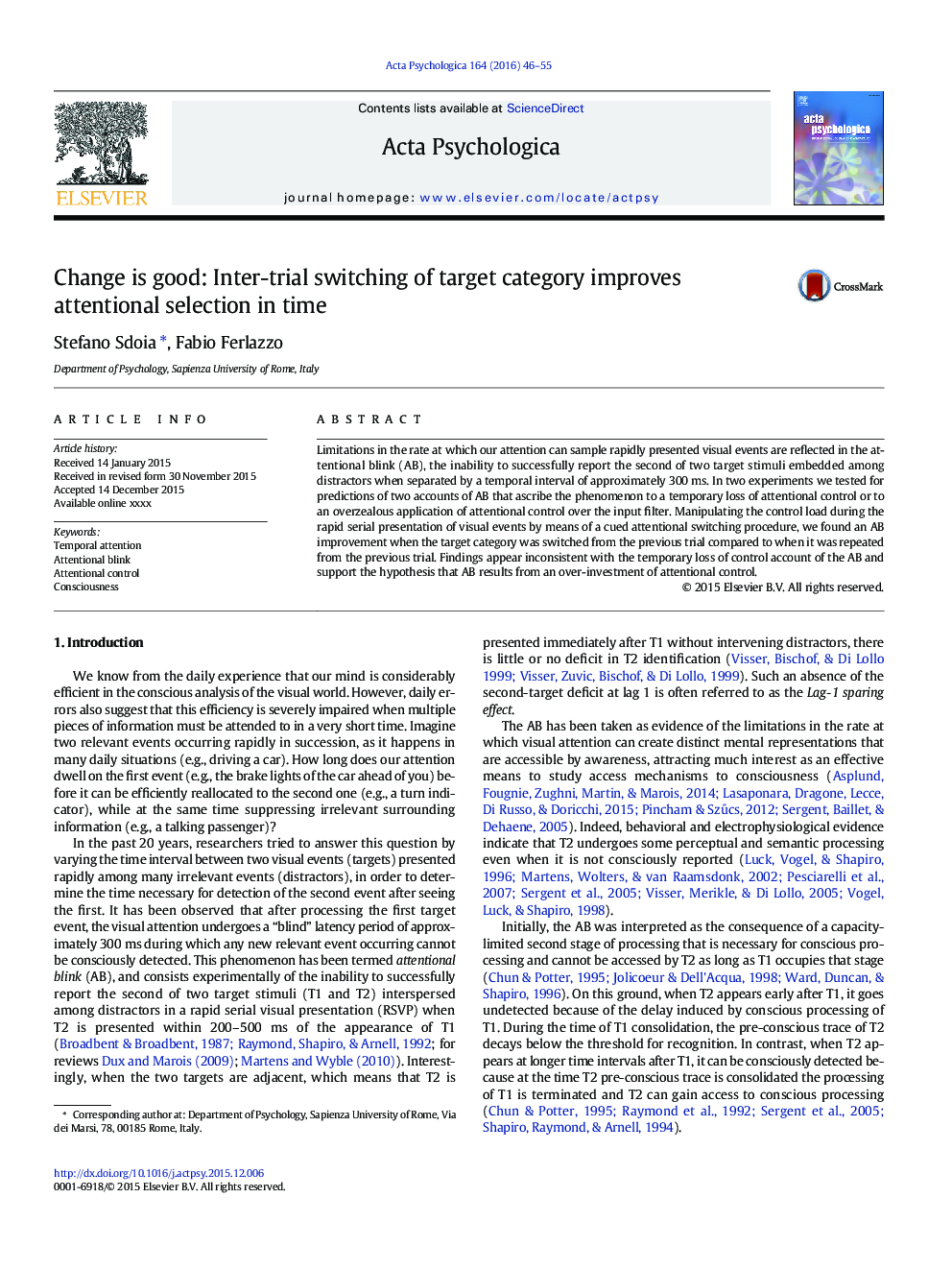| Article ID | Journal | Published Year | Pages | File Type |
|---|---|---|---|---|
| 919656 | Acta Psychologica | 2016 | 10 Pages |
Abstract
Limitations in the rate at which our attention can sample rapidly presented visual events are reflected in the attentional blink (AB), the inability to successfully report the second of two target stimuli embedded among distractors when separated by a temporal interval of approximately 300Â ms. In two experiments we tested for predictions of two accounts of AB that ascribe the phenomenon to a temporary loss of attentional control or to an overzealous application of attentional control over the input filter. Manipulating the control load during the rapid serial presentation of visual events by means of a cued attentional switching procedure, we found an AB improvement when the target category was switched from the previous trial compared to when it was repeated from the previous trial. Findings appear inconsistent with the temporary loss of control account of the AB and support the hypothesis that AB results from an over-investment of attentional control.
Related Topics
Life Sciences
Neuroscience
Cognitive Neuroscience
Authors
Stefano Sdoia, Fabio Ferlazzo,
